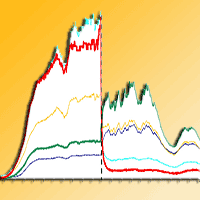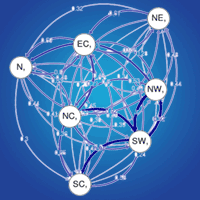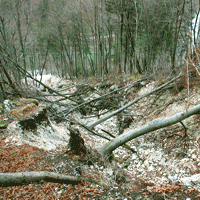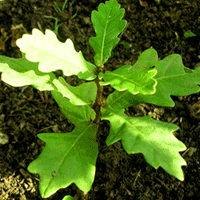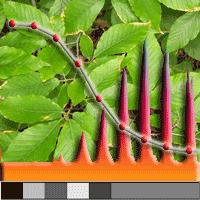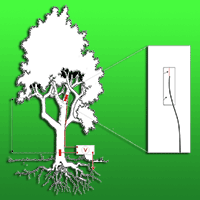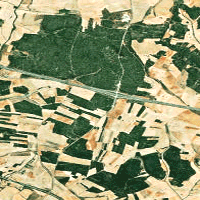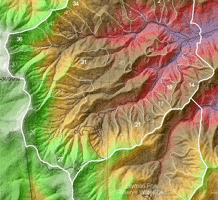
Alterations on flow variability due to converting hardwood forests to pine
Y Serengil (1) , WT Swank (2), JM Vose (2)
iForest - Biogeosciences and Forestry, Volume 5, Issue 2, Pages 44-49 (2012)
doi: https://doi.org/10.3832/ifor0609-009
Published: Apr 02, 2012 - Copyright © 2012 SISEF
Research Articles
Abstract
Flow variability is a potential indicator of land use impacts on aquatic ecosystems and a dominating factor for lotic habitats. Vegetation management effects on the stream habitat conditions must be better understood to propose forest management activities that are compatible with general ecosystem management objectives (integrity, diversity, sustainability, etc.). In our study, we used long term flow data (1936-2004) from four gauged experimental watersheds (W1, W2, W17, W18) of Coweeta Hydrologic Laboratory in US to assess the impacts of pine conversion on flow characteristics by using paired watershed experimentation. In W1, all trees and shrubs were cut and burned in 1956-57 and white pine (Pinus strobus) was planted in 1957. In W17, white pine was planted in 1956. W2 and W18 have been kept untreated as reference watersheds for W1 and W17, respectively. After analyzing long-term daily flow series with flow duration curves and frequency analyzes, we found that the timing and magnitude of 7Q flows were changed significantly due to conversion but flow variability was not affected. Overall findings revealed that pine conversion has significantly influenced some flow characteristics but stream habitat conditions were not affected potentially.
Keywords
Flow variability, Conversion to pine, Ecological flows, High-low flow frequency
Authors’ Info
Authors’ address
Dept. of Watershed Management, Istanbul University, Istanbul (Turkey)
Corresponding author
Paper Info
Citation
Serengil Y, Swank WT, Vose JM (2012). Alterations on flow variability due to converting hardwood forests to pine. iForest 5: 44-49. - doi: 10.3832/ifor0609-009
Academic Editor
Roberto Tognetti
Paper history
Received: Oct 24, 2011
Accepted: Feb 08, 2012
First online: Apr 02, 2012
Publication Date: Apr 30, 2012
Publication Time: 1.80 months
Copyright Information
© SISEF - The Italian Society of Silviculture and Forest Ecology 2012
Open Access
This article is distributed under the terms of the Creative Commons Attribution-Non Commercial 4.0 International (https://creativecommons.org/licenses/by-nc/4.0/), which permits unrestricted use, distribution, and reproduction in any medium, provided you give appropriate credit to the original author(s) and the source, provide a link to the Creative Commons license, and indicate if changes were made.
Web Metrics
Breakdown by View Type
Article Usage
Total Article Views: 54305
(from publication date up to now)
Breakdown by View Type
HTML Page Views: 45843
Abstract Page Views: 3162
PDF Downloads: 3786
Citation/Reference Downloads: 27
XML Downloads: 1487
Web Metrics
Days since publication: 5004
Overall contacts: 54305
Avg. contacts per week: 75.97
Citation Metrics
Article Citations
Article citations are based on data periodically collected from the Clarivate Web of Science web site
(last update: Mar 2025)
Total number of cites (since 2012): 1
Average cites per year: 0.07
Publication Metrics
by Dimensions ©
Articles citing this article
List of the papers citing this article based on CrossRef Cited-by.
References
Streamflow changes associated with forest cutting, species conversions, and natural disturbances. In: “Forest hydrology and ecology at Coweeta” (Swank WT, Crossley Jr DA eds). Ecological Studies, vol. 66, Springer, New York, USA, pp. 297-312.
Gscholar
Forest hydrology and ecology at Coweeta. Ecological Studies, vol 66, Springer-Verlag, New York, USA.
Gscholar
Woodcock-Johnson III diagnostic supplement to the tests of cognitive abilities. Itasca, Riverside, IL, USA.
Gscholar

